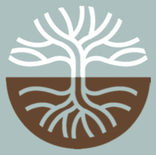|
Learning how to 'read your land' is vital to more sustainable land management. Reading your land simply means taking the steps needed to develop a more holistic understanding of your land that includes the pros and cons.
Reading your land should be done BEFORE you set your goals. Once you determine what your land can do for you, THEN set your goals. Using this approach produces will produce longer-lasting, more resilient results because you will be working with the land as opposed to forcing it to be something it cannot or should not be. We will develop an online guide to help landowners read their own land. See the basic steps outlined below. |
Steps to take (starts at the larger scale and works down to the smaller scale):
1) Is your land on top of Texas karst country?
2) What kind of soils do you have (use Webs Soil Survey)?
3) How deep is it to the bedrock (use Web Soil Survey)?
4) What areas have a slope less than 15 percent; what areas have slopes more than 15 percent (use a topography map)?
5) What direction do slopes face (use a topography map)?
6) What is the history of clearing since 1985 (use Google Earth Pro)?
7) Are there any large-scale activities happening upslope (developments, quarries, horse farm, etc.)
8) What fences surround the property (class and height)?
9) What wildlife have you observed on your property and how do they move through it?
10) What ecozones (such as old-growth forest, dense thickets or shinneries, riparian, managed pasture, native prairie) does your land possess?
11) What are the key species, approximate age, and composition of each ecozone?
12) What indicator species do you have (such as dense group of cedar elms, lone cottonwood on hillside, cedar sedge, big muhlies, etc.)?
13) Are there signs of erosion (surface, rill, streambank, etc.)?
14) Are your soils degraded, moderate or healthy? (use the squeeze method, hire a soil biologist, measure som, measure infiltration rate, etc.)?
2) What kind of soils do you have (use Webs Soil Survey)?
3) How deep is it to the bedrock (use Web Soil Survey)?
4) What areas have a slope less than 15 percent; what areas have slopes more than 15 percent (use a topography map)?
5) What direction do slopes face (use a topography map)?
6) What is the history of clearing since 1985 (use Google Earth Pro)?
7) Are there any large-scale activities happening upslope (developments, quarries, horse farm, etc.)
8) What fences surround the property (class and height)?
9) What wildlife have you observed on your property and how do they move through it?
10) What ecozones (such as old-growth forest, dense thickets or shinneries, riparian, managed pasture, native prairie) does your land possess?
11) What are the key species, approximate age, and composition of each ecozone?
12) What indicator species do you have (such as dense group of cedar elms, lone cottonwood on hillside, cedar sedge, big muhlies, etc.)?
13) Are there signs of erosion (surface, rill, streambank, etc.)?
14) Are your soils degraded, moderate or healthy? (use the squeeze method, hire a soil biologist, measure som, measure infiltration rate, etc.)?




